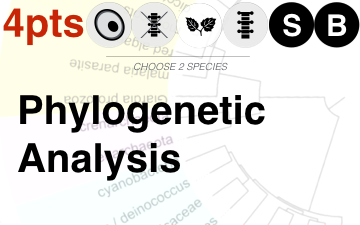In biology, phylogenetics /ˌfaɪloʊdʒəˈnɛtɪks, –lə–/[1][2] (Greek: φυλή, φῦλον – phylé, phylon = tribe, clan, race + γενετικός – genetikós = origin, source, birth)[3] is the study of the evolutionaryhistory and relationships among individuals or groups of organisms (e.g. species, or populations). These relationships are discovered through phylogenetic inference methods that evaluate observed heritable traits, such as DNA sequences or morphology under a model of evolution of these traits. The result of these analyses is a phylogeny (also known as a phylogenetic tree) – a diagrammatic hypothesis about the history of the evolutionary relationships of a group of organisms.[4] The tips of a phylogenetic tree can be living organisms or fossils, and represent the “end,” or the present, in an evolutionary lineage. Phylogenetic analyses have become central to understanding biodiversity, evolution, ecology, and genomes.
(From: Wikipedia, June 2016)


